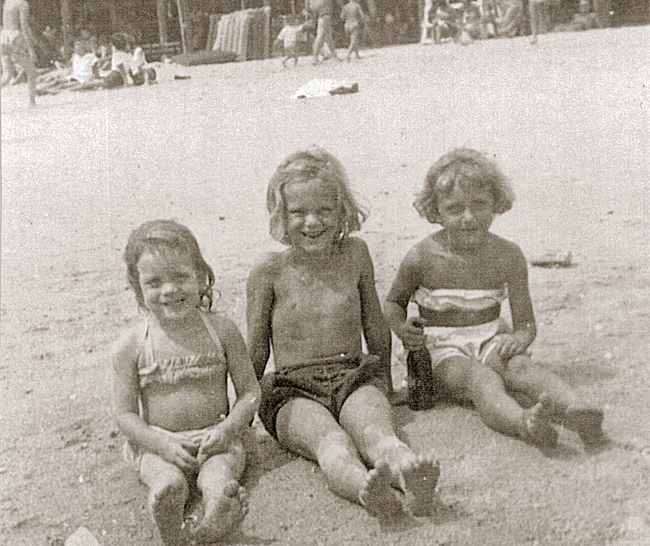
One early Wrightsville Beach experience stands out in Silvey Robinson’s mind, although as a child, her family traveled from Wilmington to the shore many times each week.
Preparing to leave after a day spent at Lumina Pavilion, she remembers seeing more than 600 lights dotting all the eaves and gables of the structure light up from her spot on the trolley that connected the shore to the city.
“When I was maybe 5 or 6 years old, we had been at the Lumina most of the day and it was just at dark when we were sitting on the beach car and the lights came on. It was an awesome experience I will never forget. You can’t call it fairyland. It was magic. It was just magic,” Robinson said.
Despite the magic of that moment, Robinson said she did not expect to one day live at the beach. She certainly did not expect to marry into the family who owned the legendary building for some of its 70-year reign. Yet it was there at age 16 that she met her husband, Cecil Robinson, and it was there the couple made their home and raised four daughters.
“It was the best place to raise children at that time,” Robinson said.
Her niece Linda, whose father Ennis Robinson owned Lumina with his brother Relmon Robinson and brother-in-law Walter Hursey, agreed. Born a few years after the men bought it, Linda Robinson’s childhood unfolded in the glow of Lumina.
“When I lay down at night in my bed, I could see all the lights of Lumina,” Linda Robinson said.
Neither Silvey nor Linda Robinson lives on the island today, but the daze of Lumina remains.
“My heart’s still at the beach,” Silvey Robinson said. “You see what’s there, but you remember what used to be there, how pleasant it was and how uncomplicated it was.”
The big, black cloud
When swarms of mullets swam near the shore, local fishermen cast nets so big that onlookers on the beach were needed to pull the catch onto shore.
To bring the community together, the art of snagging the fish hinged on knowing when the catch approached. Standing on the old wooden jetties built to curb erosion, one could see a swarm of mullets moving toward the beach and tip off the fishermen and families.
“My grandfather and my brother would stand on top of the jetties and watch for the big, black cloud in the water,” Linda Robinson said.
Her brother would then run from house to house, alerting every family. She was proud to later take on his job when her brother grew out of it.
She said, “I just thought that was the grandest thing in the world, to be the one to run around to everybody’s house and yell, ‘Mullets, mullets!’”
The mullets usually ran along the shore during early morning, bringing out children and wives in nightgowns and bathrobes, all helping to pull a huge net of fish onto the beach.
Not one of them broken
When marine radios revealed a hurricane was heading toward the beach the evening of Oct. 14, 1954, Cecil and Silvey Robinson stayed up all night listening.
At dawn the next day, they loaded up the children and she drove inland. Her husband and brother stayed behind and weathered the storm in their boat, the Dixie Rebel.
After the tide came in and the piers came up, with the boats still attached, the pair had to dodge vessels drifting along without a captain before the Dixie Rebel sustained damage after crashing into submerged pilings. Cecil Robinson secured the boat to a light pole on Waynick Boulevard.
When Silvey Robinson traveled to the beach after the hurricane passed to find her husband, she saw dislodged houses and roads buried by sand — and finally, near where Carolina Yacht Club now sits, her husband.
“I saw my husband walking toward me. I dropped my children’s hands and ran toward him. By that time, I didn’t know what had happened to him,” she said.
Assessing the damage the next day, the couple saw something extraordinary.
“As we walked south from Station One, or Lumina, there was a two-story house that had been up on pilings and those pilings had been washed out, so the house was almost on its knees. … And in the breeze were two strands of sand dollars, not one of them broken,” she said.
A Christmas spectacle
The trio of men that bought Lumina Pavilion was also the founding group of the beach’s Lions Club, which orchestrated a spectacle every Christmas.
Linda Robinson’s father, Ennis, would travel to Brunswick County and cut down the biggest tree he found and set it up on the municipal dock, located at what is now Wynn Plaza. On Christmas Eve, he drove up and down the beach playing Christmas carols from a loudspeaker on his truck while the kids enjoyed a visit with Santa Claus.
“On Christmas Eve night, Santa Claus would come on the fire truck across the bridge, all lit up. It was so dramatic. And then a few years later — this was even more dramatic — Santa came in on the Coast Guard boat,” Linda Robinson said. “Santa gave out stockings to all the children.”
One way the club funded the Christmas festivities was by selling store-bought bread at slightly marked-up prices at the entrance of the only bridge that crossed Banks Channel in those days.
Linda Robinson remembers the police chief, Millard “Stinky” Williamson, parked his car at the entrance to make sure everybody stopped.
email [email protected]




